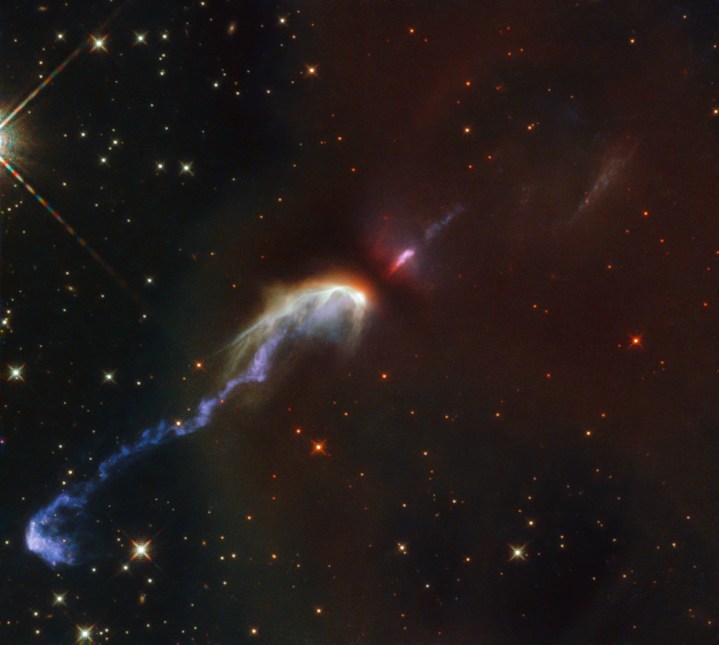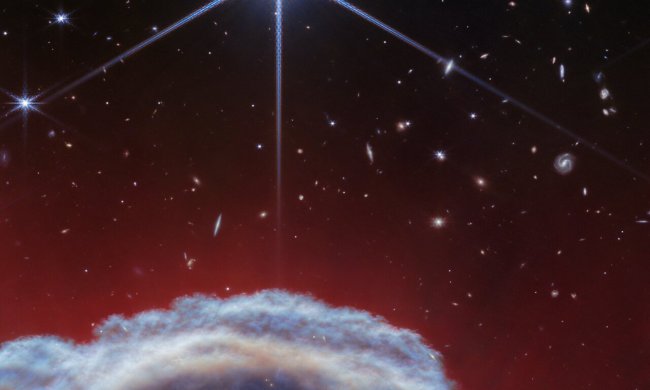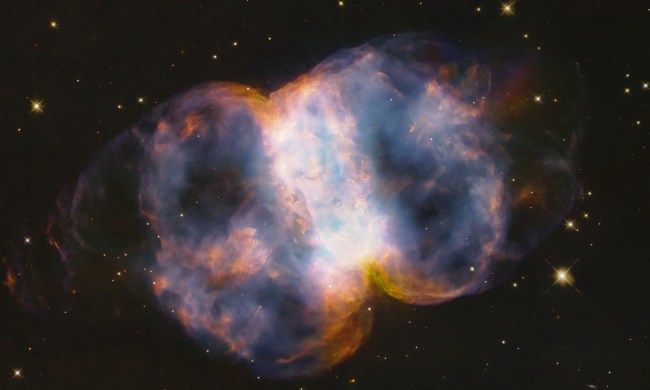
This strange-looking sight, captured by the Hubble Space Telescope, is a pair of Herbig-Haro objects. These objects are rarely spotted in such detail, and studying them could give clues to how stars and born and evolve.
Each jet of brightness is classified as its own object, with the two seen in this particular image cataloged as HH46 and HH47. They are located in the constellation of Vela (the Sails) and are more than 1,400 light-years away.
The illuminated shapes form when newborn stars throw off jets of ionized gas, which the European Space Agency refers to as the “tantrums of a baby star.” These jets can intersect with nearby clouds of dust and gas at extreme speeds, creating shockwaves that form the objects.
Astronomers observed the first Herbig-Haro object in the 19th century, though at the time they thought it was a type of emission nebula — a cloud of dust and gas that becomes ionized by a nearby hot star. More such objects were discovered, and they were thought to be reflection nebulae, which are cloud of dust and gas which reflect the light from other stars. The objects were eventually given their name after the first two astronomers who studied them in-depth, George Herbig and Guillermo Haro.
It wasn’t until 1977 that the two objects pictured, HH46 and HH47, were discovered, and astronomers finally understood what the objects were. American astronomer R.D. Schwartz first proposed the theory that jets from newborn stars were creating visible shockwaves when they hit clouds of dust.
Studying these objects helps us to learn about how stars form. Astronomers John Bally and Jon Morse write that newborn stars are tempestuous, and throw off a large amount of matter in their first 100,000 years of life. These outflows don’t always form Herbig-Haro objects, but when they do, the objects can reveal information about the speed and motion of these jets.



